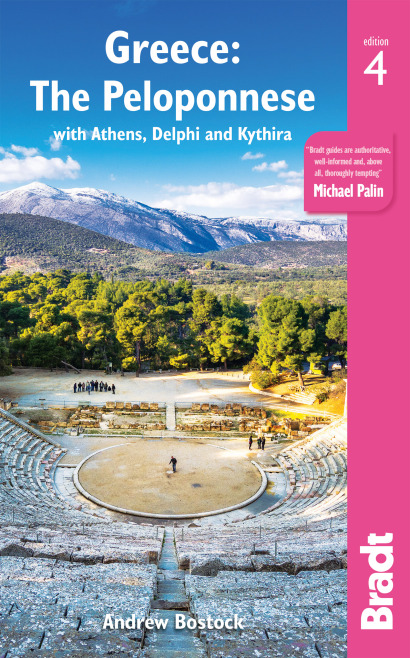From little coastal fishing ports to high mountain settlements, the Peloponnese has it all. Once you’ve arrived, you can take your pick between strolling through narrow cobbled alleyways, taking a seat in a traditional Greek taverna or soaking up the history of hilltop fortifications. Here are our picks of the prettiest towns in the Peloponnese.
For more information about this beautiful region, see Andrew Bostock’s guide to Greece.
Gythio
Gythio, the modern capital of the Mani, is a pleasant port town with a 19th-century, Neoclassical harbourfront. After the wilds of the Mani this feels like the epitome of civilisation. Compared with some towns, it has a pleasingly low-key air, and its charms are simple.
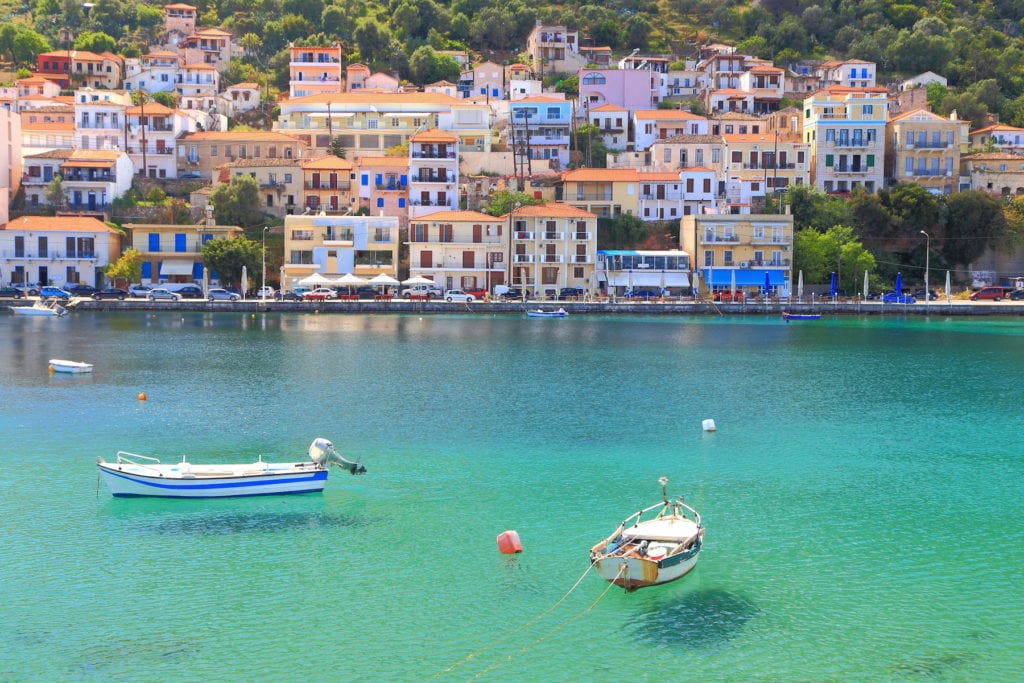
Don’t be fooled though – it is also where one of the greatest seductions of all time was consummated. The island just offshore, then called Kranae, is mentioned by Homer as the site of Paris and Helen’s first night together after they had run away from her husband, King Menelaus of Sparta.
This island, now connected by a causeway to the mainland, still has a romantic feel to it even though Paris and Helen of Troy are long gone. It is a favourite destination for a volta (stroll) in the evenings and there is a café here and a smart(ish) fish restaurant.
Kalavryta
Considering its size – you can easily walk from one end to the other – the little town of Kalavryta definitely has much to offer. First and foremost it is the final destination of the wonderful rack-and-pinion railway that snakes up the mountains from the coastal port of Diakofto, a ride not to be missed.
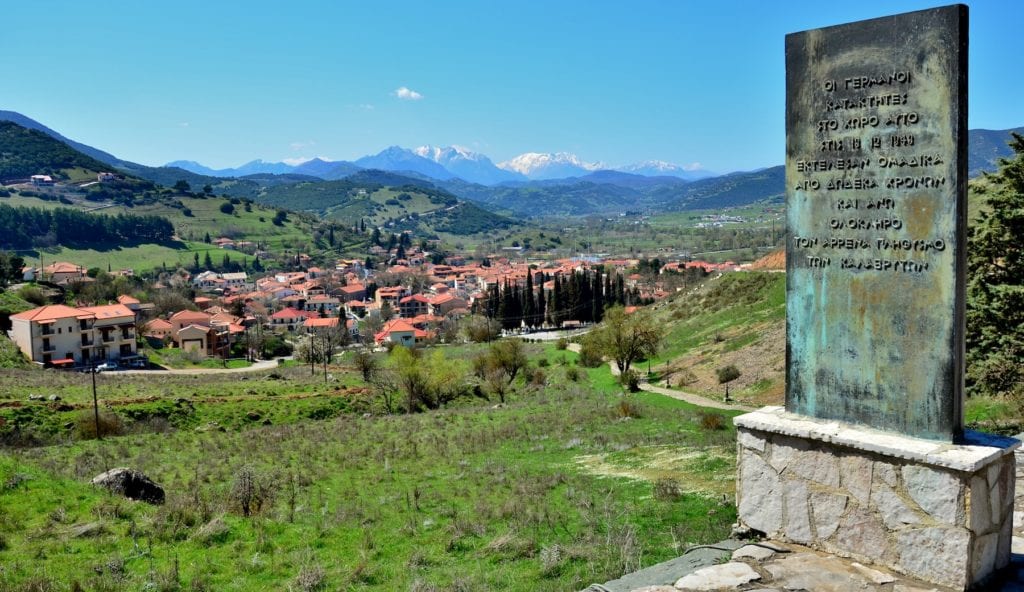
Secondly, for something a little different, it has developed into a trendy little ski resort and is well worth a visit in the winter months. In the spring the area is a walker’s paradise and in the summer its height, 900m, provides a welcome relief from the heat of the lowlands.
Kardamyli
Kardamyli is delightful, and has one of the most perfect settings of any Greek village, with the towering Taygetos behind – including a rare glimpse of the pyramid-shaped peak of Profitis Ilias, the range’s highest.
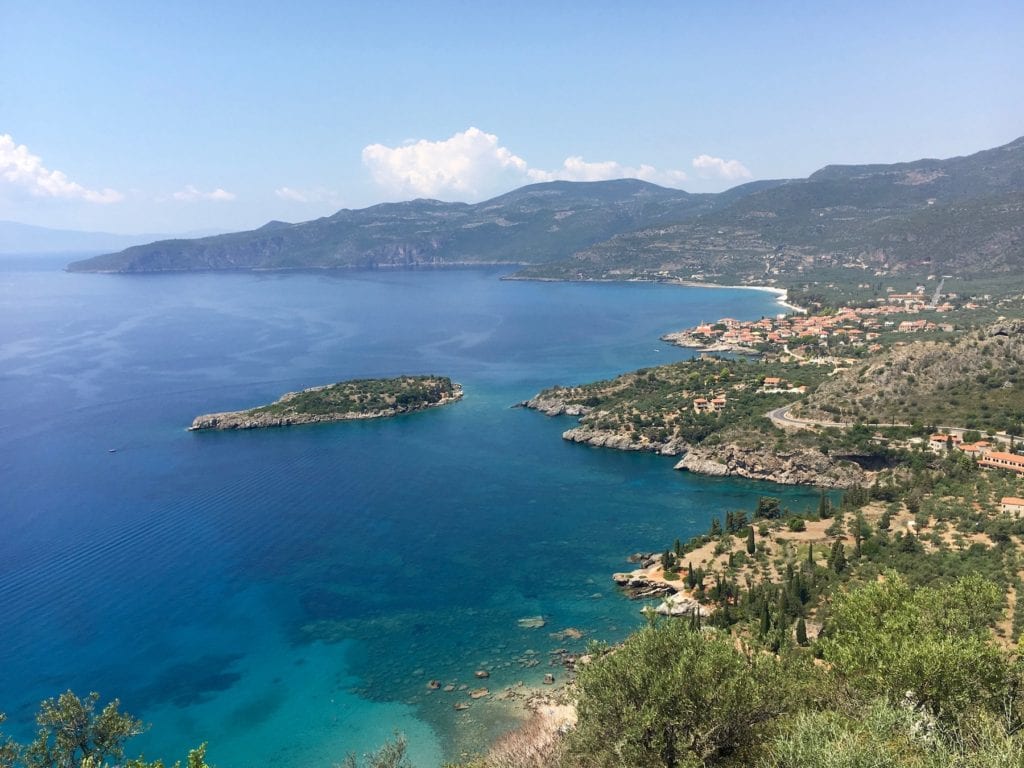
Kardamyli has a history going back to Classical times. Kardamyle, as it then was, appears in the Iliad as one of the seven cities that Agamemnon offered to Achilles to try to persuade him to stop sulking in his tent. The village itself is charming and worth a wander about, but the main thing to do in Kardamyli is simply to enjoy the spectacular setting.
Koroni
Koroni is reminiscent of some of the islands, with its whitewashed houses set round a small port rising up to a low hill behind, on which perches the castle. It has that sleepy air of everyone waiting for the daily ferry to arrive, when they will all suddenly burst into frenetic action. Except, in Koroni, the ferry never comes.
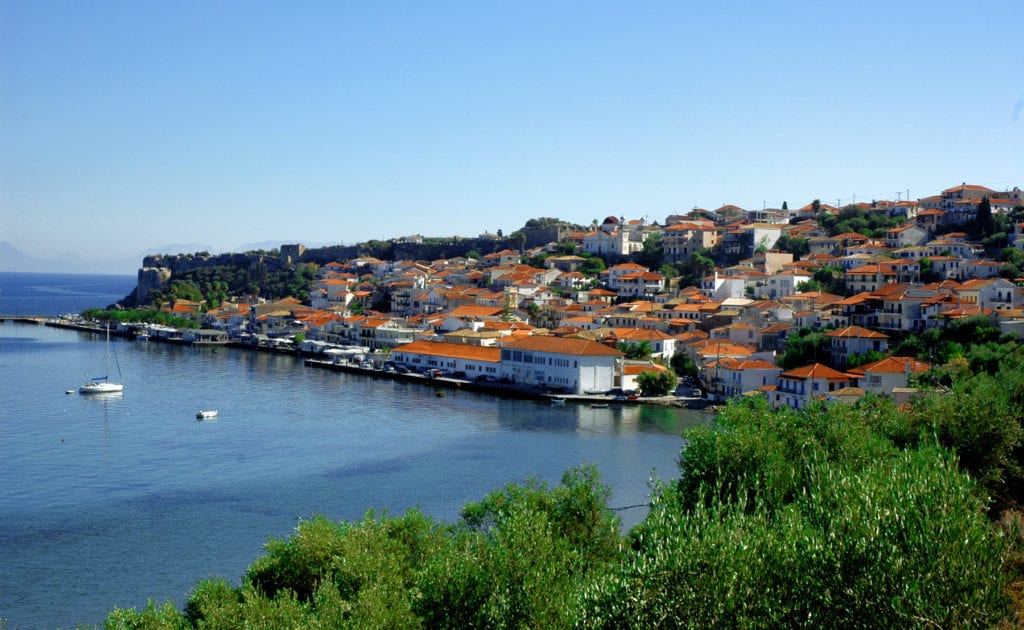
Koroni is a town for wandering around and its backstreets are largely pedestrianised, and often actual staircases. The inhabitants of the town clearly realise what a little gem they have and take evident pride in it. The whitewash is immaculate and enlivened with splashes of colour (and not just the ubiquitous blue), while potted flowers spill over the balconies.
There are enough little surprises to make wandering a delight: small churches, Venetian fountains, and a disused windmill that looks out over the rooftops.
Monemvasia
Monemvasia is best visited at dusk or at night. The town is invisible from the land, and even standing in front of the gateway you have little idea of what awaits inside. The entrance tunnel includes a sharp right turn, an excellent defensive measure.
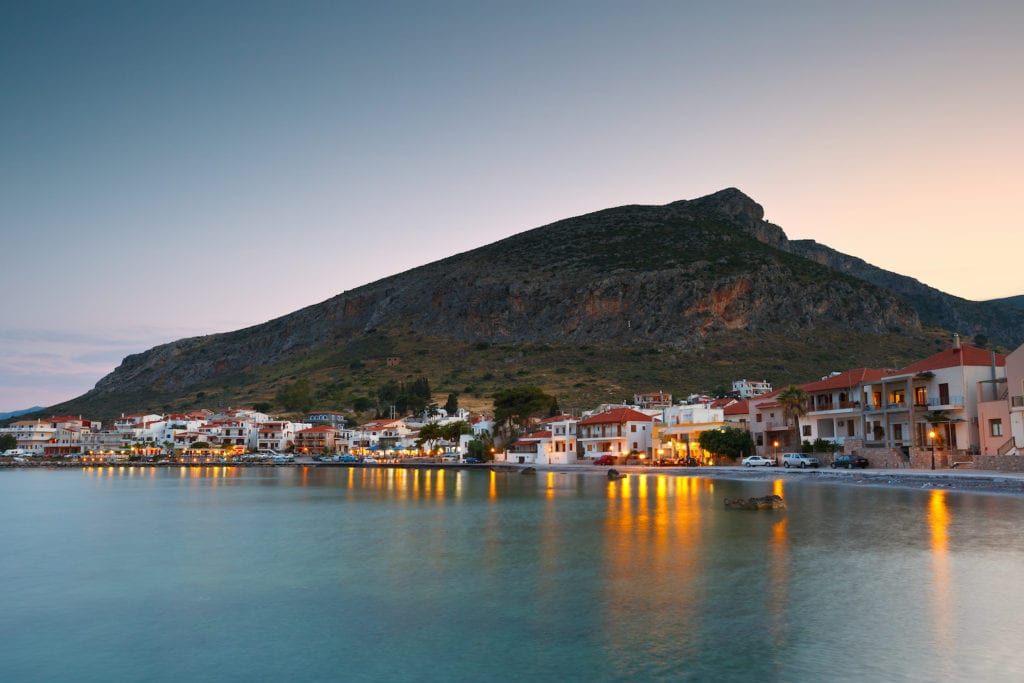
The result of all this is that when you emerge, blinking, on to the cobbled main lane, it is as if some magical transformation has taken place; perhaps a time portal back to the Middle Ages. The trendy art and craft shops soon put paid to the last notion, but there is something enchanted about the place. The town has an exceedingly romantic air, and one of the best things about it is getting lost in its streets.
Nafplio
When you visit Nafplio it is easy to see how it has earned the name ‘prettiest town in the Peloponnese‘, which many people bestow on it. The heart of the town is the harbourfront, faced by the small citadel of Bourtzi on its little island, and the old town behind it, which is centred on Syntagma Square and is mainly pedestrianised.
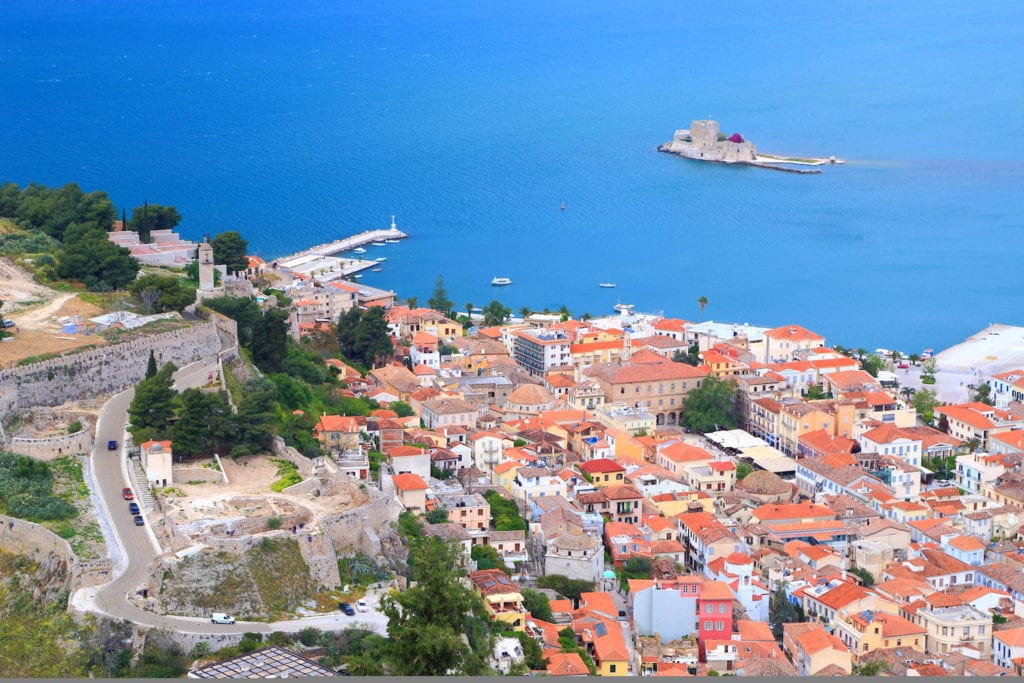
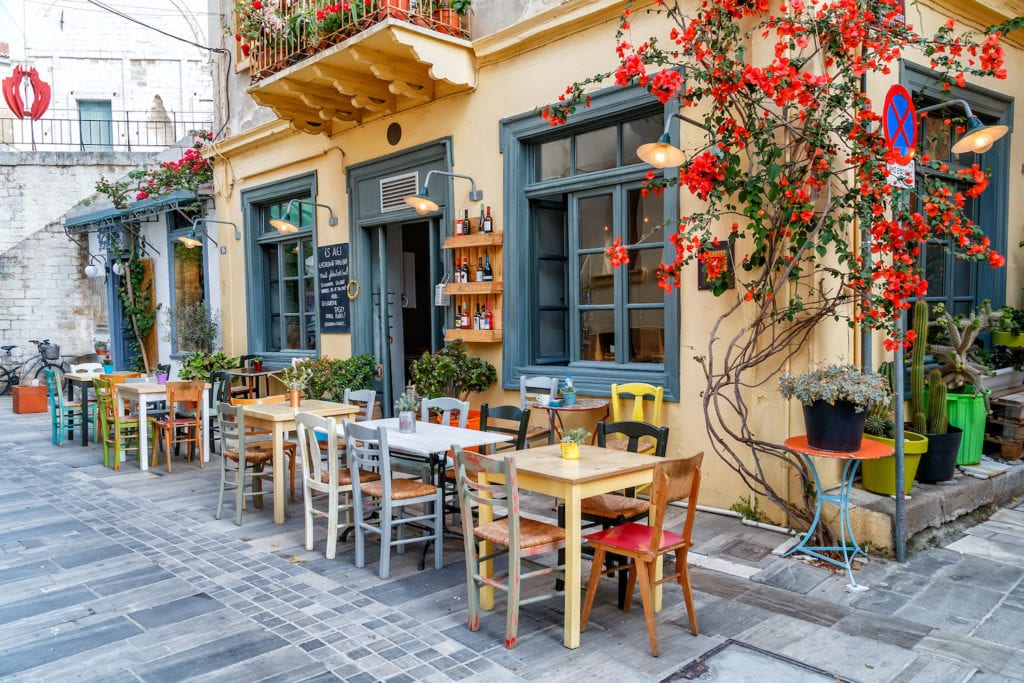
The two main castles rise above this. Syntagma Square is surrounded by cafés, and the best thing to do in Nafplio is to alternate between sitting and soaking in the atmosphere and wandering the streets and alleys of the old town.
Stemnitsa
Situated just above the spectacular Lousios Gorge, Stemnitsa is one of the most beautiful of all the Arcadian mountain settlements. The first building you notice on the way into Stemnitsa from the south is the large, pentagonal Silversmithery School, on the left-hand side. The village has long been known for its craftsmanship in gold and silver, and there are shops that still specialise in its wares.
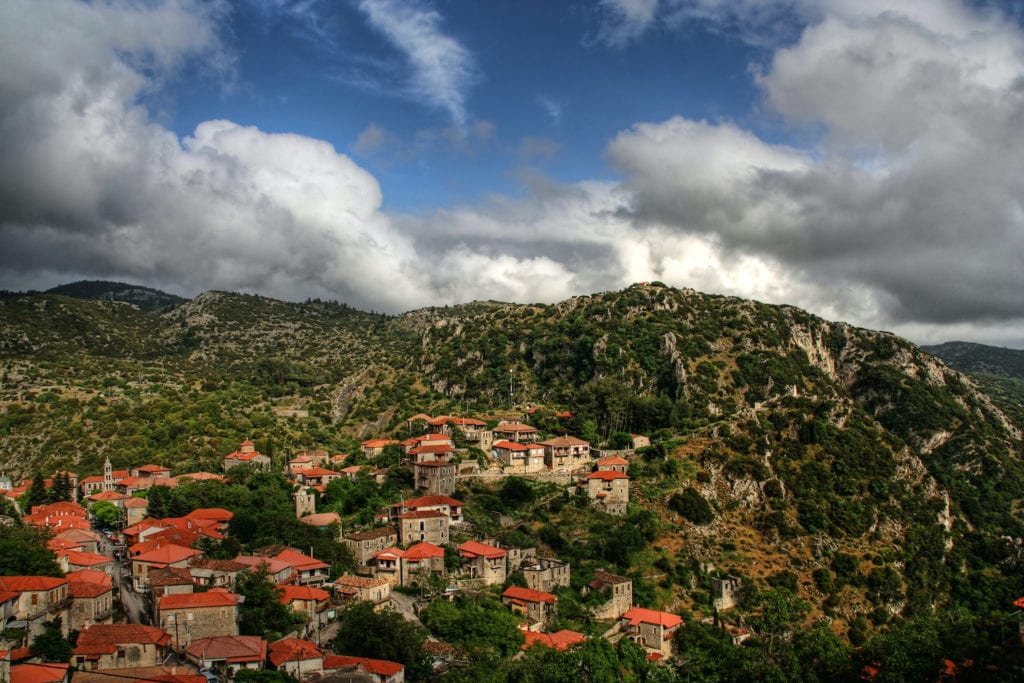
To get a sense of the history of this, and other crafts, visit the Folk Art Museum, which is opposite the college. To see a real medieval church head to the central square and go up the lane by a free-standing 19th-century bell tower. This leads up to the Panagia Vafero whose earliest bits date back to 1185.
More information
For more information, check out Andrew Bostock’s guide to the Peloponnese:
